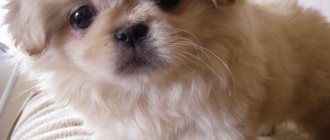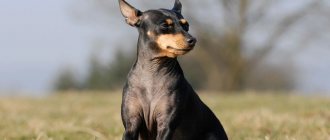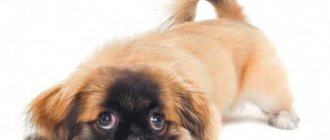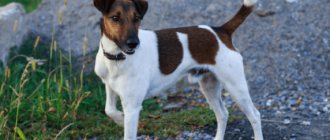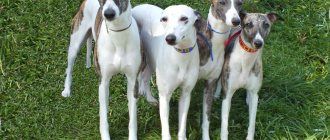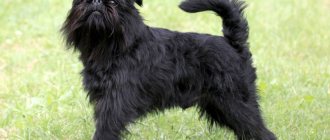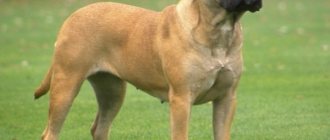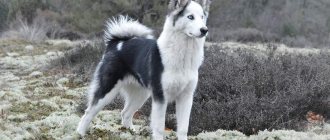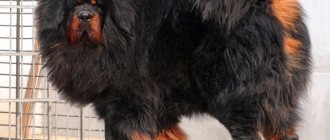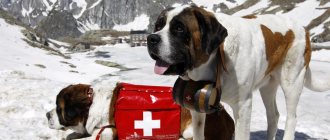- home
- Care
»
07/15/2018Care
Pekingese are indoor long-haired dogs. They were bred in China and lived exclusively with the emperor's family. In the 18th century, the breed found its way to Europe. This breed immediately began to win the hearts of animal lovers. Until now, these dogs are very popular in many countries. Outwardly, they resemble dwarf lions. Besides their appearance, pets have many advantages. In addition, caring for a Pekingese puppy is not as difficult as it might seem at first glance.
Pekingese puppies
The breed is very unique. Its representatives have luxurious fur. Adult dogs look a little like lions due to the long mane on the neck and head. Pekingese puppies, photos of which can be found on the Internet, differ from adults. They do not have a pronounced mane, soft, long hair that covers the entire body of the animal. The babies look like a fluffy soft toy. A distinctive feature of a decorative dog is dark hair on its face.
A newborn Pekingese weighs only 150-250 grams. By 12 months, the pet grows to 3.5-5.5 kg. An adult dog has the same weight.
Pekingese puppies have a cheerful disposition. They love children immensely and do not refuse games and pranks. At an early age, dogs are curious, active, and naughty. In this regard, it is not recommended to delay education and training. These animals are brave, they adore their owners, and are always ready to help. If a loved one is in danger, the puppy, without hesitation, will rush to attack the enemy.
Pets do not accept cruelty from their owners. They have a very good memory. If the owner offends his four-legged friend, the Pekingese will stop trusting the person for life.
Breed Features
The Pekingese originated in Ancient China and belonged to the Emperor's family. Outwardly, it resembles a lion cub due to the long hair on its neck and head. Pekingese puppies have a less pronounced mane, they look like an even fluffy ball.
An adult dog has a strong build, its height is up to 25 cm, its weight is up to 5 kg. The head is larger than the body, the muzzle is flat, the eyes are large and bulging.
The color may vary; a distinctive feature is the fur near the nose, eyes and tips of the ears that are black.
- The puppies are very cheerful and willingly play with children. They are disobedient, so education must begin at an early age.
You cannot offend or use physical punishment - the Pekingese will remember this for the rest of its life and will trust the owner less. Representatives of the breed are brave, always ready to protect the owner and attack in case of danger.
Where to buy a Pekingese puppy?
The answer to the question “where to buy a Pekingese puppy?” not as simple as it seems. People often pay a lot of money for a small, fluffy puppy, mistaking it for a purebred Pekingese. Typically, such transactions are made after an advertisement is seen in a newspaper or on the Internet. As a result, over time it becomes clear that the pet only vaguely resembles a representative of the Pekingese breed.
Experts advise buying purebred Pekingese from specialized nurseries. There you can get all the necessary certificates, documents for the puppy and parents. Dogs in kennels where breeding is carried out are vaccinated and dewormed.
Kennels sell puppies belonging to a certain category. For example, there is a category “champion” (also called “show class”). Pekingese, which belong to the “champion” category, have practically no flaws. They are very obedient, they have an excellent appearance, and they also take first places in exhibitions. The “breeding class” category means that the pets are excellent for breeding, but do not participate in exhibitions. The third category is “home” or “pet class”. These puppies are not suitable for showing or breeding.
Dogs sold by private individuals through newspapers and the Internet are most often phenotypic. The babies have no pedigree, they only look like a real Pekingese.
There are several recommendations that should be followed when purchasing a real representative of the breed:
- You need to purchase a dog from experienced breeders or kennels.
- The baby must be more than two months old.
- A healthy Pekingese does not limp.
- When purchasing, an agreement is drawn up, which spells out the responsibilities of the seller and the buyer.
- If a puppy is purchased to participate in exhibitions, then its new owner needs to obtain a guarantee from the kennel.
- You can find out whether a dog belongs to the “show class” only after it turns 6 months old. Until this age, it is impossible to guarantee that a dog belongs to the “champion” category.
Listed below are the most famous Russian nurseries where you can buy a Pekingese puppy.
Eternal love (Nizhny Novgorod)
ZHENJU and Savelina (Novosibirsk)
ELITLAIN (St. Petersburg)
Dream Dee Dals (Moscow)
Perfetto (Penza)
How much does a Pekingese puppy cost?
The cost can vary from 4 to 50 thousand rubles. The price depends on the category of the animal. Its pedigree and external characteristics are also taken into account. A phenotypical pet will cost approximately 4-10 thousand rubles. You can buy a pet-class Pekingese puppy for 10-15 thousand rubles, a breed-class puppy for 15-30 thousand. Show class Pekingese puppy. Its price varies from 30 thousand rubles and above.
Unusual representatives of the breed are in greatest demand these days, including:
- White Pekingese puppies. Completely white individuals, in which the absence of the characteristic dark pigmentation on the face is acceptable.
- Dwarf Pekingese puppies. Identifying a Dwarf Pekingese puppy is quite difficult. They are born from normal Pekingese dogs. At the same time the same size as the others. Only after 8-9 months do breeders realize that the baby is a dwarf. The weight of such an adult does not exceed 3 kilograms.
- Royal Pekingese. Puppies of this species are the best in the litter of regular Pekingese. The Royal Pekingese is a man-made breed. However, this does not prevent breeders from asking for a higher price for it.
The listed animals have prices higher than other Pekingese by 6-10 thousand rubles.
Basic care for a Pekingese puppy
If your four-legged friend has all the necessary things, caring for him will not be difficult. How to care for a Pekingese puppy? First of all, the owner should pay attention to the pet’s fur. She needs to be brushed daily. It is enough to comb the fur of adult dogs three times a week. Daily brushing of babies is done not only to tidy up the coat, but also to accustom the puppy to the procedure itself. The baby should be calm about combing. First, the dog is placed on its back. Then they put him on his paws. Before combing, the wool is sprayed with a special spray. The product will help you get rid of mats easier. It is especially worth paying attention to the armpits and paws. This is where fur often gets stuck.
When taking your dog for a walk, you should treat the fur for fleas. It is also recommended to wear overalls. It keeps you warm and keeps dirt and debris out.
Representatives of this breed are rarely bathed. Only if the puppy is very dirty. After interacting with water, the hair begins to actively fall out and breaks. Dry shampoos are sold for Pekingese. After bathing, it is better to dry the coat with a hairdryer. This is done to prevent the dog from catching a cold.
It is necessary to regularly tidy up your puppy's claws. They are very sharp and grow quickly. If they are not trimmed in time, the baby may injure himself. In addition, the claws become bent and may begin to grow into the paws. If you don't trim them regularly, your dog will end up on the surgeon's table.
Ears are cleaned with dry swabs and only when necessary. If there is an unpleasant smell from the ears, the puppy should be taken to the veterinarian. The smell can signal illness. Another symptom of ear problems is itching. You can learn about it by the behavior of the animal. Usually the baby shakes his head and rubs his ears against objects.
Pekingese care and maintenance
This dog can be easily kept in an apartment and does not require special care. Of course, if you can't stand the smell of a dog or pieces of fur stuck to the carpet, it's better not to get a Pekingese. The dog sheds 2 times a year and believe me, there will be a lot of fur during this period.
Caring for your Pekingese during shedding requires careful care. You should get a set of combs and brushes in advance for combing out thick fur. Also, a damp cloth may be useful to remove it. You can comb short hair with a massage brush; it is better to comb long hair with a large comb with wide serrations. For tangled wool, a special tool is sold - a “tangle cutter”. When combing, it cuts off the crumpled hair.
Due to the special structure of the skull, the Pekingese does not tolerate hot weather very well. His nose is unable to process and cool air. For a pet to live comfortably, the house must be cool. If you had air conditioning in your apartment before you got a dog, that’s great. If not, then try to ventilate the rooms often or lay a damp towel in the place where the Pekingese is resting. Heat will have a bad effect on your pet's condition.
| There was a case when the owner left the baby alone in the car on a hot day and went to the store. When he returned, 30 minutes had passed and he found the animal already dead. |
Walk
Don't believe people who say that you don't need to walk your Pekingese often. The dog should get its share of fresh air. Walk for at least 15 minutes, twice a day, and you will forget about your pet’s bad behavior, illnesses, and so on. After walks, be sure to wash your dog. They love to be clean and do not tolerate dirt, so sometimes they try to demand to be brushed. To prevent your dog from licking itself, wash its paws and underbelly in a small basin after walking.
Small dogs can go to the toilet outside or in a special litter box for dogs in the apartment. Read how to toilet train a Pekingese puppy here. Let your pet play outside only with small toy dogs. It will not be difficult for a large dog to injure a baby or even worse. To protect Pekingese from other dogs and cats, owners even buy gas canisters.
You can feed Pekingese porridge with meat and vegetables or industrial food twice a day. More about how to feed the Pekingese is written in our article: How and what to feed the Pekingese.
When changing teeth
When they are puppies, Pekingese dogs love to chew on everything. Due to the special structure of their muzzle, they will not cause much harm to your furniture, but it is better to put the wires away from the prankster! In order not to worry about your belongings and interior items, buy “delicious toys” with the smell of meat at the pet store.
Transport
How to care for your Pekingese during transportation? Ornamental babies tolerate short-term trips wonderfully. The main thing is not to be too hot. On a long journey, you should stock up on: a container for transportation (the Pekingese should have its own special corner where it will not be disturbed); in the hot summer, you need to wet the rags on which the baby lies. The dog will be comfortable if you wet it completely or spray it with water (a kind of coat conditioner).
to travel with your dog in the cabin . The main condition is that the weight including the bag for transportation should not exceed 8 kg. But if the main weight exceeds the permissible 8 kg, you will be forced to check the dog in the luggage compartment. This will be a strong emotional blow for the Pekingese. To protect yourself and your pet, it is better to buy him a separate ticket and enjoy the flight with your four-legged friend. And so, in principle, you should not have any difficulties with transporting the Pekingese. The dog is compact, calm and understands perfectly well that he needs to be patient.
| The Legend of the Pekingese Once upon a time, there lived a lion who fell in love with a monkey. This is how a dog with the face of a monkey and the fearless character of a lion was born! This is how the origin of the imperial dog, the Pekingese, is explained. |
Personal items
A small pet should have its own things. Among which are several bowls for water and food. It is best to buy durable metal plates. An equipped bed is required. It is best to place it in a corner from which the dog can clearly see its owners. Special toys from the pet store. You will also need a set of wool brushes, scissors and nail clippers.
A lap dog can't go for a walk without a pair of overalls. Clothing performs several functions at once. Keeps your pet from freezing and also protects its thick coat from dirt.
Care for intimate areas
Attention should be paid to the fold under the nose. This is an integral feature of this breed. It must not be contaminated. This may lead to the development of a skin disease. It is wiped with dry gauze every day.
Owners should monitor the puppy's eyes. Healthy visual organs are clean and clear. A breed specific feature is eye leakage. This is not a disease. It’s just that in some individuals the functioning of the lacrimal duct exceeds the norm. If your dog has tears, they need to be wiped with a dry cloth. Periodically, the muzzle is washed with water and then wiped dry.
The Pekingese is a small dog that cannot reach the anal gland area. The owners will have to wash this delicate area. This is done as needed. About once a month. If the puppy rides on the floor on its hind legs. It also rubs its intimate area on the floor and carpets, which means it needs cleaning. Some owners may think that their pet has worms. However, after cleaning the glands, the itching stops. The animal begins to behave as usual.
Pekingese height and weight chart
| Initial weight (in kg) | 0,15-0,17 | 0,18-0,2 | 0,2-0,25 |
| Age in months / Height | small | average | large |
| 1 | 0,5-0,8 | 0,8-1 | 1-1,3 |
| 2 | 0,8-1 | 1,3-1,5 | 1,5-2 |
| 3 | 1-1,2 | 1,5-1,7 | 2-3 |
| 6 | 1,3-1,5 | 1,8-2 | 3-3,3 |
| 8 | 1,5-1,7 | 2,2-2,5 | 3,3-3,8 |
| 11 | 1,8-2 | 2,5-3 | 3,8-4,5 |
| 12 | 2-2,2 | 3-3,5 | 4,5-5 |
| 18 | 2,2-2,5 | 3,2-3,5 | 5,5-6 |
Using tabular data and knowing the weight at birth, you can determine how much a Pekingese should weigh at each age period.
The weight of Pekingese puppies increases gradually, increasing in proportion to its size. But the stages of development themselves are uneven. This can be noticed by taking body measurements every week. So, at some point, the paws may become longer than before, and the size of the head may decrease relative to the length of the body. This is all a normal process: the growth of the Pekingese, like any other dog, occurs with slight asynchrony. Some parts of the body grow more slowly, while others, on the contrary, are ahead of the basic proportions. In general, absolutely all dog sizes increase with age.
Simultaneously with the growth, the dog develops: he learns new things, his behavior becomes more predictable, and his character is formed.
The time of year in which you raise your Pekingese ; if it is in winter, then you need to add a little fish oil to the food in order to cover the body’s increased demand for vitamin D.
If the dog's fur looks very bad, without shine and somewhat disheveled, and there is peeling of the skin, but without redness, the reason is poor nutrition. It is necessary to monitor what the dog is missing and add brewer's yeast to the food. How much should a Pekingese eat? The best indicator is his “figure”. The Pekingese must be slender, i.e. If you put a Pekingese on your palm, then all of its ribs should be clearly palpable. He shouldn't be too thin either. When it is wet, you can correctly determine its weight and determine the proportions of its body. Watch his figure when bathing. The Pekingese's caloric needs cannot be determined with 100 percent certainty. accuracy, it is necessary to take into account the weight, height, age and mobility of the dog. We can only talk about this approximately: a 4 kg Pekingese requires approximately 350-400 kcal, a 6 kg one - 500-550 kcal; and 8 kg – 600-660 kcal. This is only if you are not overweight.
A haircut
The first haircut of a Pekingese puppy is carried out when the owners decide. There are no exact rules on this issue. A puppy can be cut at six months, or later. A well-groomed, trimmed dog looks cute. But besides this, it’s more comfortable for him to play and run. The only recommendation from experts is that haircuts are usually carried out twice a year. In addition, owners should try to refine their pet’s coat in spring and summer. That is, in the warm season.
You can trim your pet yourself using a clipper. Or you can visit a special groomer. Before grooming a puppy, its coat must be washed, dried, and tangles removed. It is not recommended to cut your dog's hair. Acceptable haircut options, they are also the most popular:
- “Under the puppy” (about 2-3 centimeters of fur are left).
- “Like a lion” (a beautiful mane is left, the body is trimmed, the length of the ennobled fur is about 1.5 centimeters).
- Hygienic haircut. The fur is only slightly shortened. The main thing is to trim it on the face, panties, and skirt.
Care and nutrition
Wool
Particular attention should be paid to the animal's fur. To keep it shiny, silky and healthy, it is necessary to provide proper and regular care.
After a meal, it is imperative to brush the fur on the Pekingese's face, and after each walk in the fresh air, thoroughly clean the paws and belly.
It is recommended to systematically comb your pet's fur to prevent tangles from forming. The dog should be bathed in warm water, and a special shampoo for long-haired dogs should be used as the main detergent.
After water procedures, you need to dry the animal’s fur well (it is advisable to use a hair dryer for this purpose) and comb it out carefully.
Only daily brushing will keep the mini breed's coat in excellent condition. Particular attention must be paid to the pet's eyes. Caring for them involves daily cleaning of various contaminants and dust. A soft handkerchief is usually used for this.
It is not recommended to wipe your eyes with cotton swabs, as there is a risk of irritation of the cornea. A typical problem for dwarf Pekingese is eyeball prolapse, so when grooming your pet, you need to ensure that the eyes remain protruding evenly.
If you find even a slight discrepancy, it is better not to wait for the situation to worsen, but to seek help from a veterinarian.
To clean the ears, special products for animals are used that are capable of dissolving accumulations of wax. For this purpose, you can use a 3% solution of hydrogen peroxide.
Teeth
The teeth of mini Pekingese also need proper and constant care - after eating, be sure to look into the animal’s mouth and examine the oral cavity for pieces of food stuck between the incisors.
If your pet spends most of its time at home, then its nails need to be trimmed regularly to avoid ingrown nails.
When caring for a pet, all procedures are important, but you should try to spend a little more time on the eyes. Comprehensive eye hygiene includes daily wiping with a damp swab or soft cloth.
In the presence of characteristic purulent discharge, antibiotic-based products must be used. If you don’t know what exactly to buy at a pet pharmacy, then seek advice from a specialist.
How to feed
The diet of mini Pekingese should be balanced. As an option, you can buy your beloved pet a special food that contains the necessary groups of vitamins, amino acids and beneficial microelements in sufficient quantities.
You can feed your dog homemade food, but in this case you need to create the right menu. The dog's diet should consist of half boiled meat and offal.
It must also contain fresh vegetables and cereals (buckwheat, rice and others) in equal proportions. You can diversify the menu with fresh fruits.
What to feed a Pekingese puppy?
Pygmy lion puppies are picky eaters. They need a balanced diet. You can also buy ready-made special food for the puppy, or you can feed it food prepared by the owners. Your baby's diet should contain the foods listed below.
- Dairy products.
- Boiled fish (bones removed first).
- Veal, turkey, beef, chicken.
- Hercules, rice porridge, buckwheat.
Kennels sell puppies over two months old. By this time, the dog has been weaned off its mother's milk. Babies up to three months are fed 6 times a day. From 4 to 6 months, dogs are given food 4 times a day. After six months, the Pekingese should receive food 3 times a day. When the dog turns 10 months old, it is switched to two meals a day.
Caring for an adult Pekingese
The key to a happy life is good nutrition and frequent walks. You can walk an adult Pekingese 2-3 times a day. If walks are carried out quickly, then at least once a week you should walk the dog for at least an hour. A sedentary lifestyle will lead to obesity.
The dog's food should not be too high in calories. It must contain all vitamins, special attention should be paid to components that improve the condition of the coat. The peculiarity of the Pekingese is the ability to go without food for a day or more. To maintain heat metabolism, they do not require a large amount of calories, so the animal tends to extort from the owner only what he wants. A pliable person can spoil a dog. Make it a rule not to give your pet anything other than fermented milk, vegetables and fruits as treats!
The animal's diet should include cereals, meat, and vegetable oils. When feeding dry food, strictly follow the instructions.
Appearance care requires special attention
The shape of the eyes requires daily rubbing with tea leaves or products suitable for these procedures.
Don't forget the fold under your nose! It needs to be washed.
The ears should also be kept clean. You can inspect them 1-2 times a week, and if dirty, clean them with chopsticks.
Nails should be trimmed regularly, and the hair between the toes should also be trimmed.
Wool requires maximum care. Brushing and daily examination will help to notice pathologies in time, and will also preserve the beauty and health of your pet.
Washing your dog frequently is not recommended.
Vaccination
Caring for a Pekingese puppy involves timely vaccination. The first vaccinations for Pekingese puppies are given at 2 months after the dog stops feeding on mother's milk. Preparation for vaccination involves treating the animal for worms.
After 3 weeks, the puppy should be brought back to the veterinarian for vaccination. This is followed by 2 weeks of quarantine. If they are successful, the dog will not be bothered by anything. On this basis, the doctor will allow you to take your four-legged friend for a walk. The next vaccination is scheduled for the time when the dog's baby teeth are replaced. This will happen by 9-10 months.
Vaccination is necessary for the Pekingese breed. Vaccinations for puppies are best done on time and from trusted doctors. This procedure will protect the animal from many diseases.
Pekingese puppies are quite capricious animals. But they love their owners very much. The pet responds especially well to affection, love, and attention. In addition, a person must provide proper care for the Pekingese puppy. Thanks to kind attitude and proper care, your four-legged friend will be healthy and happy.
